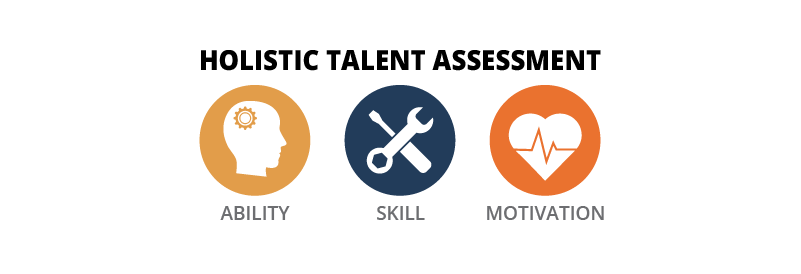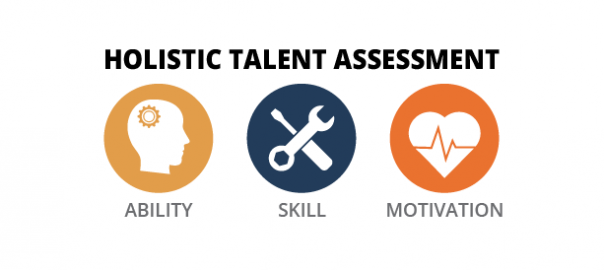Top 2 Ways to Improve the Hiring Process
In his highly influential book, From Good to Great, Jim Collins pointed out that a company’s most important asset is not its people, it’s the RIGHT people. The implication is that people are not a simple commodity that can be hired and exited with little impact on customer satisfaction or even the bottom line. Although companies within the same industry often share many similarities, each has some unique features – such as its culture, procedures, training, and goals – that distinguish it from its competition.
It is precisely these company-specific qualities that demand careful attention to the way in which applicants are screened, hired and placed into jobs, especially when hiring for customer contact jobs in retail, contact centers, hospitality, and sales. Companies that are dedicated to only hiring those people who have the right mix of skills, abilities, interests, and personal characteristics to perform the core job duties, AND who have a compatible belief system, will outdistance their competition in short order.
Top 2 Steps to Improve the Hiring Process
Two important steps to improving hiring are often overlooked. But they’re part of a strategic talent management model that has been proven to be effective in hundreds of leading companies around the world. These two strategies should be part of your pre-employment hiring process.
1. Define what it means and takes to deliver exceptional customer service.
Take a step backwards and invest time to better understand the company’s broader strategy. The following questions will help you begin to get a better feel for some of the bigger issues and opportunities:
- What is the company’s corporate culture?
- How does the company define and strive to achieve superior customer service?
- How is the company performing relative to its competitors today – financially and in terms of customer satisfaction?
- Over the next 12 months, what are the top five areas to improve in your business?
- What are customers (current and former) saying about the company?
- What will be the company’s focus in three to five years?
- Who are the key competitors and will they be the same over three to five years?
The answers to these questions (and many others) will help paint a picture of the company, how it’s performing, and where it’s going over the next few years.
It is equally important to understand the operating environment and its requirements. Documenting the nature of the work environment, work conditions, performance expectations, policies and procedures, compensation and reward structure, and the culture within the company setting is essential to accomplishing the goal of step 1. The lessons learned represent the context in which the jobs will operate. Jobs do not operate in a vacuum, so it is essential to understand the operating conditions, drivers, and inhibitors.
The final requirement is to conduct a review of all jobs that you are hiring for, their goals, and how they impact the company’s success. Invest the time necessary to clearly document what employees do on a daily basis, how they go about completing their work, and what it means to be successful. Be sure to specify what knowledge, skills, abilities, and other individual characteristics are essential to complete each job successfully.

The information gathered in this step will tell the story of what it means and takes to deliver exceptional customer service.
2. Specify how to measure success (and failure) fairly and accurately.
A surprisingly overlooked aspect of building a robust hiring and talent management strategy concerns how to measure performance. Most employees assume the company knows how to accurately measure performance, but in reality, few companies have a robust performance measurement process. More often than not companies conduct an annual or semi-annual review during which a supervisor evaluates a representative on a standardized rating form that supposedly measures those things that are critical to on-the-job success. However, considering the rate of attrition and crippling shrinkage, it seems likely that many companies have room for improvement when it comes to defining what it means to perform well and then measuring it accurately.
Measuring performance well begins with a clear definition of the job’s role within the business and what someone in the job is expected to produce. It is essential to delineate these outcomes in ways that are clear and observable. In doing so, the company will be able to create an evaluation form that pinpoints precisely those things that are critical to success. Moreover, the same information can be used to modify hiring and training processes, and to educate employees (i.e., supervisors and representatives) on exactly what it takes to be successful.
Business & Finance Articles on Business 2 Community
(62)










